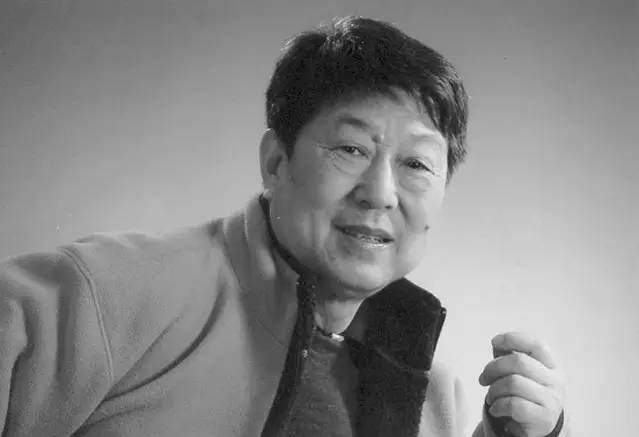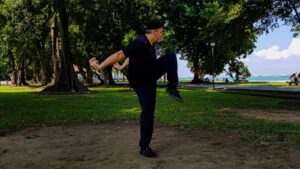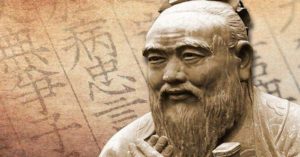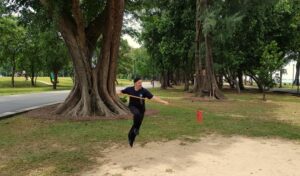Interview of Liu Rui by Alex Yeo in T’ai Chi Magazine, October 2007
Alex Yeo: Thank you Master Liu for this interview. Could you give us a brief introduction to Zhaobao Taijiquan?
Liu Rui: Zhaobao Taijiquan is an orthodox school of Taijiquan as created by Zhang Sanfeng. It was passed down to Jiang Fa (1574- 1654) of Zhao Bao town (located in Henan Province) by Wang Zongyue of Shangxi province. One of the better-known inheritors was Chen Qingping (1795- 1869). Chen had many disciples; among them was He Zhao Yuan (1811- 1891)(who created He Style Taijiquan). Zhaobao taijiquan has flourished into various schools [of Zhaobao Taijiquan] and among them, He style has become the main stream of Zhaobao Taijiquan. Zhaobao Taijiquan has the traditional characteristics of Wudang boxing. Although it has been hundreds of years since Zhang Sanfeng created Taijiquan, Zhaobao Taijiquan nothing the less still retained the special characteristics of the three arts [form, push hands, and martial applications] melted into one pot as created by Zhang Sanfeng [from which the name Three-Harmonized- in-One]. In the 1920’s my teacher Zheng Wuqing (1894- 1984) followed He Zhaoyuan’s grandson He Qing Xi (1862- 1936) and studied the Dai Li routine. I am Zheng Wuqing’s inner disciple and the 11th generation inheritor. For many generations Zhaobao Taijiquan had been kept strictly within the town. It was only in the time of the 10th generation that the art was taught to outsiders.
Alex Yeo: How did you start learning Zhaobao Taijiquan?
Liu Rui: I’m not from a martial arts family. It was fate that brought me to it. In the 1950’s and 1960’s, [living] conditions were very bad and due to lack of nutrition I was very, very ill. Basically the doctors gave up on me and even refused to treat me. Fortunately, an old physician recommended me to my teacher to learn Taijiquan. Within 100 days, I showed miraculous recovery, after which I continued to learn and the rest is history. I was fortunate to follow my teacher for 20 years. He was like a father to me, teaching me everything he knew. From 1974, my teacher took almost seven years painstakingly correcting every single minute detail of my form.
Alex Yeo: I’m not very familiar with Zhaobao style, but I have the impression that there are many different sets and routines in Zhaobao Taijiquan, unlike other styles such as Chen which only has two representative forms, and Yang, Wu(2), Wu(3), and Sun which only have one representative form each, excluding variations. Why is this so?
Liu Rui: It’s about spreading to the masses. Seventh generation Chen Qingping didn’t keep strictly to the rule of keeping the art within the town. He sorted out the routines into three different routines – Dai Li, Ling Luo and Teng Nuo. Chen taught the Dai Li routine to He Zhaoyuan, the Teng Nuo routine to Li Jing Yan, and the Ling Luo to other disciples. Among Chen’s disciples, He Zhaoyuan had the best gongfu. He personally passed down the Dai Li routine (also known as Cheng [heritage or accomplishment] or Chi Cun [measurement] routine0 to his grandson He Qingxi. He Qingxi who based on the principle of, “first from open and wide, then to small and tight,” in turn modified the routine into the Big and Small routines. The Small routine was passed to Hao Ychao and Zheng Wuqing, (who also learned the original Heritage Frame), while the Big routine was passed to other disciples. As the form originated from Wudang, was inherited by Zhaobao Town, and made perfect by the He family, this is why it has also been known as Wudang Zhaobao He Style Taijiquan besides longer-sounding, Wudang Zhaobao Three-Harmonized- in-One Heritage Frame Taijiquan, which is the style I practice and teach. Each successive practitioners of each branch [of Zhaobao Taijiquan] added their own individual experiences and understanding onto the routines they practiced and passed down accordingly. This is why there are so many different routines and methods today, and as they originated from Zhaobao Town it is not incorrect to label them all as Zhaobao Taijiquan.
Alex Yeo: So out of so many, which routine could be said to be representative to Zhaobao Taijiquan?
Liu Rui: From the beginning, the teacher could pass on what they liked to as many students as they wished, but the Cheng routine (Heritage Frame) was passed on only to one or two disciples. Why? We know that Zhaobao Taijiquan has the concept of three-harmonized-in-one and the Heritage Frame best displays this concept. The Heritage Frame is characterized by high postures and very smooth and gentle movements. What is three-harmonized-in- one? It is form, push hands, and combat applications, you do not have to change the movements yet you can still use them as is. Zhaobao and Wudang are just localities. Cheng means to “ji cheng”, (meaning to inherit, to carry on), and to “da cheng”, (meaning to achieve, accomplish). [There were very few] inheritors of this routine, only one or two in each generation. It was meant only for the succeeding leader, though two would usually be taught; just in case something happened to the chosen successor, there would be another person to take over the role.
Chen Qingping taught the Cheng routine to He Zhaoyuan. He Zhaoyuan taught it to He Qingxi who taught it to Hao Yuchao and Zheng Wuqing. I was Zheng Wuqing’s disciple. Zheng loshi(teacher) also taught only two students. One was Shi Maoyuan, my elder disciple brother, and he had already passed on. The other was me. At first we learned the xiao jia, (small set). We all learned the small set. In the beginning he told me not to learn outside(meaning not to learn Zhaobao styles from other teachers), I’d only get things mixed up, (i.e., get confused). It was after seven years that my teacher started to change it into Cheng routine. Later my teacher decided to break tradition and spread the Cheng routine rather than teach only one or two per generation. [His decision was] as long as the student’s character is good and his power of understanding is high, pass it on to him. And this [instruction to spread the art] was passed down to me. So for the past few years I’d teach a student and observe him for a few years. If he meets the criteria I’d teach him the Cheng routine, if you do not inherit the Cheng routine, you do not inherit the oral formula. I have many disciple brothers, but they do not know the formula.
Alex Yeo: Those who do not get the formula would not get to learn the Heritage Frame?
Liu Rui: That is correct. They remain at the small set, or big set, or the Ling Luo sets. Now however I teach the Heritage Frame to anyone that meets the criteria.
Alex Yeo: So what is different about the Heritage Frame from other routines?
Liu Rui: Our postures are high, our movements are small, and everything is very gentle, refined and elegant. It is very natural. Nature is round, and our movements are round. Nature is yin/yang. , and in the moment we move there is also yin/yang. Nature is also straight, and we are also straight, for example, when we step, the line from knee to foot is straight. (i.e. perpendicular). Where the hands go also the body goes. This form of boxing is governed by the eight characters of zhong, zheng, ping, yuan, qing, ling. rou and huo (center, upright, smooth, circular, light, agility, suppleness and liveliness, respectively). These eight characters are in line with natural human physiology. Lightness, agility, evenness, and slowness reduce exertion of physical strength as well as release a person’s latent and hidden abilities. When your latent abilities are released, your [internal] strength will naturally be more powerful.
Every movement is [demanded to be ] light and supple, and every movement is to be accurate down to the last inch [i.e. to be absolutely at the right spot]. When you have trained [correctly] long enough , your internal energy will naturally blend external movements, your internal strength will gradually increase. This is suppleness resulting in hardness, storing up suppleness to become hardness. Supple results in hardness, the method is using suppleness. Storing up (or accumulating) suppleness to become hardness, the strength is the ability to accumulate.
The positions of the postures are strict and exact, and after becoming familiar with them, habit will become natural (i.e. subconscious movements without having to think about it). When you cross hand with somebody, the moment you come into contact you will control the opponent, and whether you want to [go on to] hurt him or not is up to you. Yet all these things are done without and exertion of strength, with no trying to force things to happen. With this kind of training, martial skills and health promotion are effortlessly blended into one.
Alex Yeo: Speaking of martial applications, how does Zhaobao Taijiquan approach this?
Liu Rui: Push hands is the bridge between the form and martial applications. Zhaobao push hands has five characters to note. They are ting, zhan, zhan, nian, and chan (listen, quick, stain, stick, pester, respectively) My teacher Zheng Wuqing once said that push hands is a contest of circles, not contending of strength. The classics say that we have to be (paraphrasing) stable like that of the flat ground yet lively like a car wheel, as well as the qi is to be like the car wheel with the wheel to be the wheel spoke.
Usually people will understand the Taijiquan circle to be flat, horizontal circle. Actually, in Zhaobao Heritage Frame Taijiquan the circle is three a three dimensional circle, rotating horizontally, vertically, diagonally, in reality a ball in fact.Take White Crane Spreads Wings, Lazily Inserting Garment. Single Whip, cloud Hands and so on, all of them are doing circular movements. And it is this kind of circularity is not a circle on a flat plane but a three- dimensional circle. Each circle leads into another circle; there is no part that is not circular. In the entire 75-posture routine there are countless circles, thus completing the entire form. In push hands we use countless circles, countless circular movements to probe each other’s strength and stability.
The higher the quality of this three- dimensional circulatory, the more able you are able to neutralize any kind of force directed towards you from the opponent and cause it to slide off the tangent of your circle. This ability to neutralize a force off the tangent of you circle seems to be something amazing, maybe even magical, but it is natural physics, all apart of natural science. This is how you handle someone who comes at you with great physical force. The movement of my circle is small, stable but quick without losing my equilibrium. The opponent when applying his force on me will not be able to stand firmly; he has lost his feet, so to speak. This is 4 liang (Chinese unit of weight, about 0.05kg) to move [i.e. 200g to move 500g].
[In the circles] everything is moving, and in spheres, constantly, never ceasing. The moon constantly orbits the earth, the earth constantly orbits around the Sun, [and] the Sun constantly orbits the Milky Way. Everything is constantly moving and they follow the circular shape. In Taijiquan we must also be like that. We must find the circle in every movement. In every posture, you have the central equilibrium, and under this condition, you execute your postures with slow, fast, relaxed, supple, nimble and lively movements. You should not nee to use much effort. If you use much effort it is no longer Taijiquan. In high -level training, you move the body with your qi. What is the motive? It is that our hands and legs not moving (i.e. the whole body does not move) you hit your opponent out. This is the highest level.
Alex Yeo: So this is the highest level, that without the body moving we can hit the opponent out?
Liu Rui: Yes but not entirely, for we still must move, but the movement is so small that is looks like we didn’t move. Observe this (demonstrating). Do you see it? Do you see my hands moving? Do you see my waist moving? There was some movement, but only those who have reached a certain standard will be able to see it. However, this is not kind of “movement” you see others doing shaking here and there.
Alex Yeo: How do you train for this kind of skill, or neigong (internal skill)?
Liu Rui: Taijiquan is a traditional Chinese health art. [Health is obtained] thru the graceful, slow, smooth and round movements, and obtained slowly. [The aim of] of Taijiquan through the round movements is to remove the external coarse strength and develop the jing, shen, qi (essence, spirit and energy). So it is through this type of training that we obtain the [Taijiquan] internal. Because it is a neijia quan (internal boxing), its emphasis is on the yi nian (the thought); there is no external form. External boxing will talk about strength, linear lines and external shape. So neigong requires a long-term training in the form to obtain. As the saying goes, “A day’s training is a day’s gong (as in gongfu). A day not trained is ten day’s lost.” The way to obtain neigong is to do the form. There is no other way. There is a saying to (paraphrasing) do the form 108,000 times. (3) So if you want to obtain neigong, the method is already spelled out clearly for you.
Alex Yeo: Just to clarify, there is only the form, there are no other methods besides the form?
Liu Rui: There is no other training method. There is just this form that we have. You just practice this form hundreds of thousands of times. You pursue it endlessly, [To give an example, if it is your goal and you practiced and] if you think you have achieved song (looseness), you practice even more to achieve even an even greater level of song. If you think you have achieved qing (lightness) you practice even more to achieve an even greater level of qing. You just keep pursuing it [i.e. practicing the form] for the rest of your life. There is no end goal to speak of [i.e. reach a point where you have “arrived” and can stop practicing the form.
Alex Yeo: Is really possible to gain gongfu just by doing the form only?
Liu Rui: Many people have practiced very hard for many years, yet they achieve nothing, and this is why so many people believe Taijiquan is just for health only and cannot produce gongfu.
This is not true.
As long as you follow all the requirements accurately, you don’t doubt what you are doing. You just do it without hesitation, and, of course you have to persevere, you will achieve the high levels of Taijiquan. It will not happen in the short term, but it will happen.
High levels of gongfu is not fiction, nor are they imagination. It is real, it is fact. I don’t know about others but let me tell you about my own teacher, and this I witnessed with my own eyes. [When] he was teaching in the public park, and someone would see some dust on his shoulders or wrinkles on his shirt and went to pat it off without him knowing, that person would find himself sent off about a zhang (Chinese unit of measurement, about 3.33 meters) away. This happened not once but several times on many occasions. [Since he taught in public parks] many people in the Northeast [of China where Zheng Wuqing was teaching] witnessed it too, so this is not a false tale or exaggeration.
Thus I say that real Taijiquan gongfu is a real thing, and not mere legend as many make it out to be. There are people who posses this gongfu. To achieve this gongfu is not an easy thing however. It requires many factors, none of which [could afford] to be absent. Why aren’t we surprised that we have an ancient saying, “Practitioners are as many as the furs on the cow, but [those who succeed] are fewer than the hooves a cow has?” Or the other traditional saying (paraphrasing), Three years of Chang Chuan (Long Fist, i.e. external martial art training) and you can kill somebody, [but] 10 years in Taji without leaving the front door?”
These saying tell us that you need to put in tremendous effort, laborious effort, and a very long time in order for the gongfu to manifest. I feel that there are no shortcuts in Taijiquan. There is a process, of “[know the] theory, put it into practice, [understand the] theory in relation to the practice, then put [it] into practice again” And the process repeats continually. This is what we call Wudang Zhaobao Heritage Frame Taijiquan, “a level of gongfu, a level of knowledge.”
Alex Yeo: How about those that have trained for many years but yet to achieve any success? What could be the reason?
Liu Rui: Some practitioners have put in many years of effort but see no progress, so they say there is nothing to gain. As the well-known saying goes, “Gongfu does not let down the person with xin”[Chinese word meaning the will or determination to succeed]. There are some reasons for this lack of progress:
+ You are tied up in your old ideology (i.e. you refuse to accept even when corrected).
+ You were taught the incorrect or wrong method.
+ You need a mingshi (teacher who understands). Then you need the transmission (he must teach you). Which do you not have?
+ Have you learned in a scientific and systematic way?
+ You do not have a deep understanding and knowledge [of the art], or what you know is not enough and you are merely scratching the surface.
+ You didn’t respect your teacher [and so he didn’t teach you].
“Those that have the will, will accomplish the matter.” Did you persevere enough? Were you determined enough? Does your teacher really understand, or is he “blind leading the blind?” Did you really do it step by step, or did you try to run before you could crawl? Gongfu is not just obtained through training; you must also understand [it]. Taiji Quan, the quan (boxing), if you want to understand it thoroughly you must put in the effort. If you think training your boxing is just putting forth your strength and energy, this is wrong, this is a big disease.
Taijiquan requires song, rou, yuan, huo (relax, supple, round, lively), if you do not realize them [i.e. understand through hands on experience], don’t understand what they mean, then no matter how hard and how long you train you will still not develop any gongfu.
Alex Yeo: You mentioned song here. You also mentioned earlier about if you think you have achieved song, to practice even more to achieve more song. What is song anyway?
Liu Rui : When we talk about song we have to talk about “song rou. (4)” Taijiquan practitioners, even those who do not practice but merely know something about the art, all know about song. Yet, when you ask them what exactly it is they could only explain it somewhat, or it turns out that they don’t really understand it after all. In twenty years with my teacher, every time he corrected my form, the first thing that he said was that I was not song enough, and I was stiff like a rod and should be more natural!
Why do we painstakingly pursue song and in the end still cannot song? We humans as we grow up and develop and live in this world, we often have to struggle against our environment, we struggle against wild animals and we struggle against each other. Only then can we survive. This kind of consciousness [of struggling and the resulting tensions caused] cannot be easily eliminated.
That’s why practicing Taijiquan is to use the natural pre-heaven strength to replace the post-heaven coarse strength. This is not something to be accomplished in one day, but needs a long period and arduous effort to explore, to pursue, to train, as well as to require the correct guidance from your teacher. Then you can have some kind of harvest.
My teacher always emphasized to me that the practitioner’s life long goal is to pursue Song. Seek song within song, seek lightness within lightness. These pursuits should never be ending. This is why [in our style] we have a saying to, “Jing Gu (muscles, tendons, sinews and bones) must song, Pi Mo (skin and hair) must Gong (attack).” These are very simple eight [Chinese] characters. But how to put them into practical Taijiquan Can cause practitioners to feel like the proverbial tiger that tried to eat up the sky, ending up with no ground to land its paws. I too once felt at a loss[like the tiger]. That time my teacher said to me, “Liu Rui, have you eaten dang shan li before? It is just like that taste. Once the pear goes into your mouth there is no residue at all. Song Rou precisely is when there is no trace of strength at all in the body. “Jing Ju must Song” means even in your bones must get rid of every last trace of hard energy.
I analyzed my teacher’s analogy and finally I understood. To song, even your bone marrow, tendons, sinews and meridians, all of them, you cannot accumulate strength, you cannot use strength and you cannot harbor strength. Yet song must also have a limit, and the limit is that the whole body must relax, like the willow supporting the wind – it is not supporting anything at all, not resisting any external forces at all. Then this is the appropriate degree of song and then your song will be natural. The manifestation of song and tension, yin and yang, concurrently, is the body is song but the back is tense. This is why in Taijiquan we require to contain the chest and raise the back. This way, the energy is able to rise from the feet, travel through the legs, concentrate in the waist and is expressed through the four limbs. The key is to song the body and tense the back. If the body is not song, how can the qi be song?
Alex Yeo: Master Liu, it is unfortunate we have such a short time available, there are many more questions I’d like to ask. So to end, could you give us a piece of advice to take home, on what we must do to obtain Taijiquan gongfu?
Liu Rui : Everything has a method. It cannot be that there is no method. The method has to be correct or you will end up on the wrong path.
Alex Yeo: Thank you.




